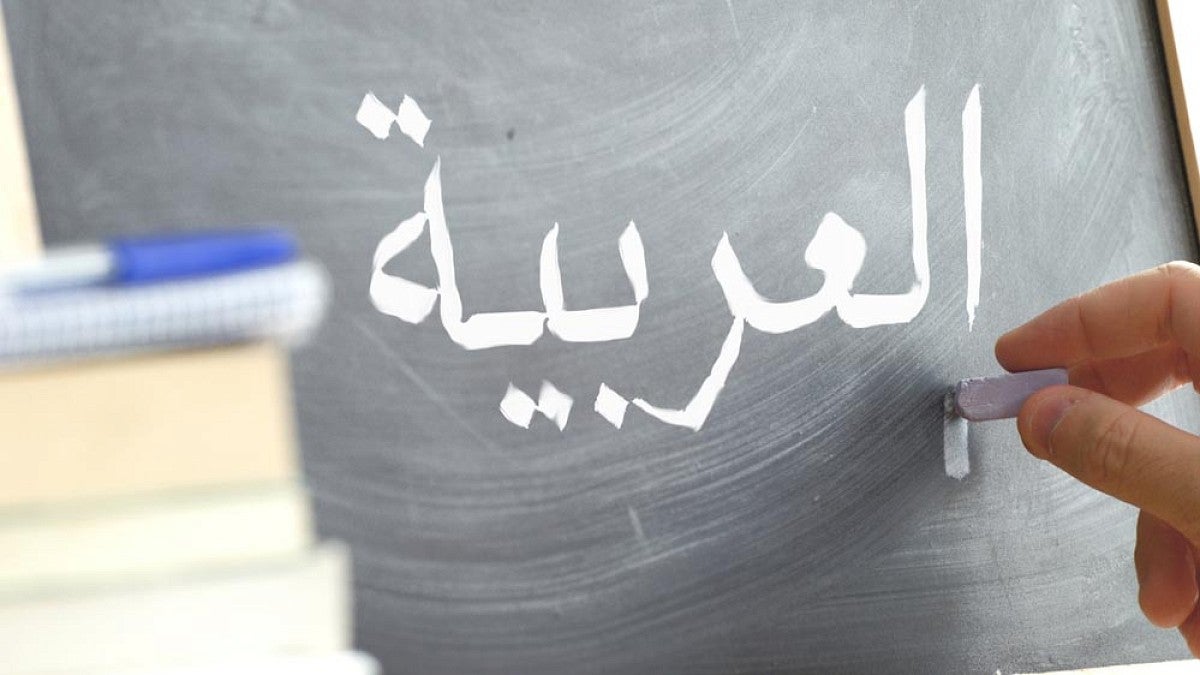A team of three UO faculty members and one undergraduate student are creating a new, innovative curriculum for first-year Arabic at the UO.
The “flipped classroom” model prompts students to complete educational modules as homework, where they’ll first learn the vocabulary and grammar. In-person class time will then draw from the information students have studied and offer time to practice language skills. The new program will debut next year, with the current 2021-22 academic year serving as a transitional period.
Thanks to a recent Open Oregon Resource Grant of $36,700, co-principal investigators David Hollenberg, associate professor of Arabic and Islamic studies, and Hanan Elsherif, senior instructor of Arabic, will lead the transition to the new program. The rest of the team includes Abdulrahman Eissa, professor of Arabic, and Benjamin Loy, a current UO linguistics and religious studies double major who has reached advanced proficiency in Arabic and Chinese and is also self-taught in Turkish and biblical Hebrew.
“I’ve noticed that highly motivated Arabic students would lose interest because classes weren’t going as fast as they would have liked, and, at the same time, we were losing students who just couldn’t keep up with the pace of the classes,” Hollenberg said. “This new model will really allow for flexibility in every student’s learning ability.”
The materials for the new courses are being developed by Hollenberg, Elsherif and the team and will consist of a minimum number of modules each student must complete. Hollenberg said the new approach sets a baseline for students to meet and allows for varying levels of motivated students to continue ahead at their own pace.
Then in the classroom, students will be divided into groups based on their current proficiency level, allowing them to practice what they’ve been learning on their own. Students will be able to move freely from group to group as their proficiency levels improve or plateau.
“Our aim is to provide a space for students who are just not sure how deep into studying Arabic they want to go yet and to allow them give it a try,” Hollenberg said. “At the same time, students who are highly motivated to study the language will be challenged and their language skills will improve.”
Arabic culture will be a major focus of the first-year course, and the program also will shift toward dialect, or spoken Arabic, in the first year. Arabic is diglossic, meaning there is a standard written language and a spoken language that varies from region to region.
Hollenberg said they plan to focus on Egyptian Arabic, the language of the most populous Arab country and also a cultural center. Students also will receive a foundation in standard Arabic that will serve them in the more advanced levels after the first year.
The Arabic program works in collaboration with the new School of Global Studies and Languages that will launch this fall, and its new approach to language learning is a core value of the school. Global studies, journalism and linguistic students are the top three majors who tend to study Arabic, with alumni of the language program going on to work in foreign service, international governments, nonprofits and business or to attend law school. Hollenberg said the program has placed many students in professions that involve Arabic over the past decade.
“We’re really drawing on the motivation of students to learn,” Hollenberg said. “The instructor becomes more of a coach, rather than a disciplinarian. Instructors meet students where they’re at, working with them to take them to the next level. Students are empowered to take responsibility for their own learning, with the understanding that everyone learns at a different pace. I’m really to see how far the highly motivated students can get in this new system.”
—By Victoria Sanchez, College of Arts and Sciences


